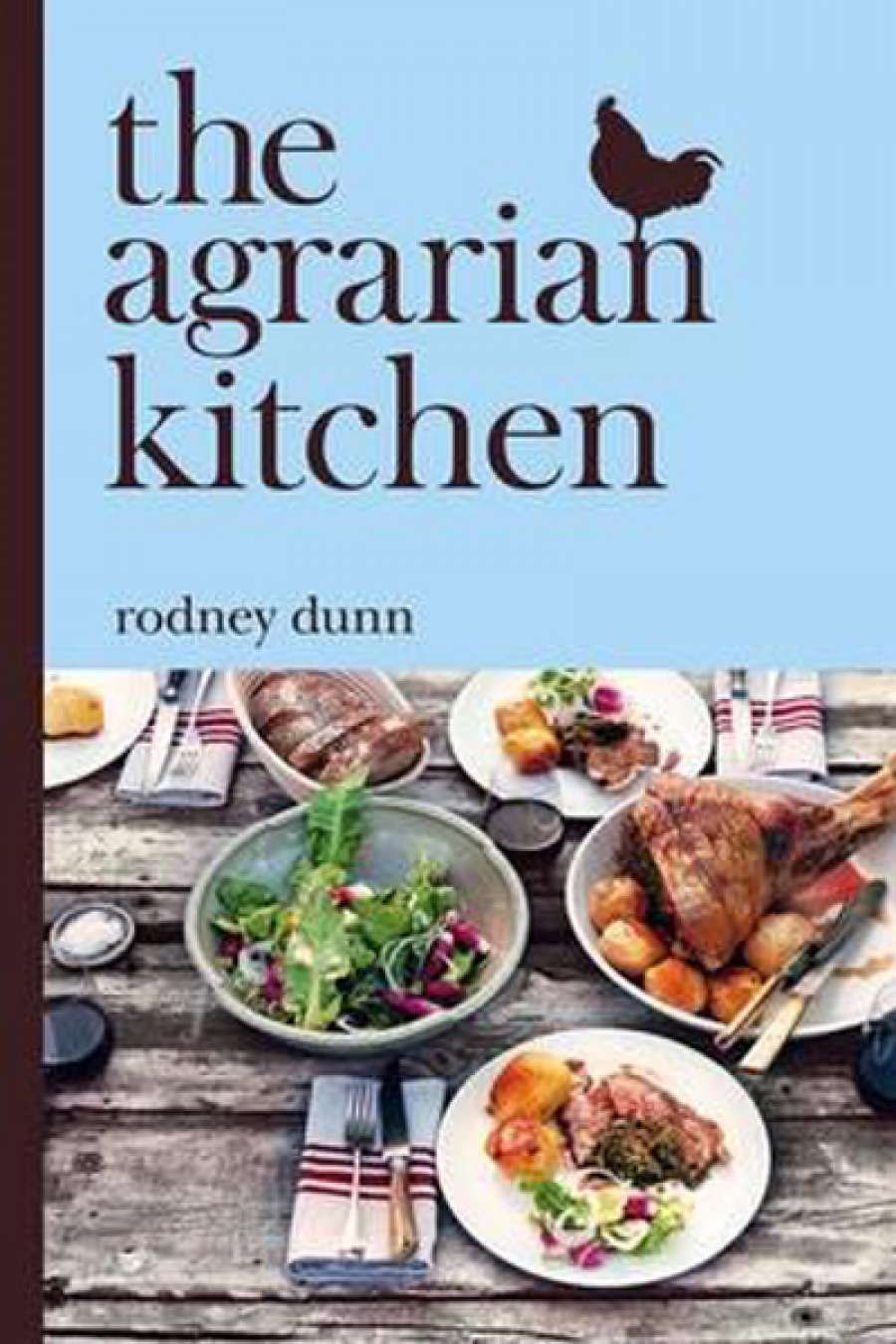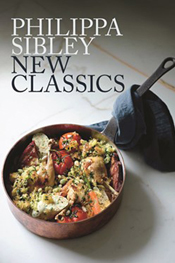
- Free Article: No
- Contents Category: Food
- Custom Article Title: Christopher Menz visits 'The Agrarian Kitchen'
- Review Article: Yes
- Article Title: Heterodox peas
- Online Only: No
- Custom Highlight Text:
Two quite different books from two very different chefs illustrate some major trends in cookery writing and publishing in Australia. One is by a city chef who runs a restaurant, and the other by a country chef who runs a cookery school.
- Book 1 Title: The Agrarian Kitchen
- Book 1 Biblio: Lantern, $59.99 hb, 273 pp, 9781921382451
- Book 2 Title: New Classics
- Book 2 Biblio: Hardie Grant Books, $49.95 hb, 272 pp, 9781742705408
- Book 2 Cover Small (400 x 600):

- Book 2 Cover (800 x 1200):

Rodney Dunn trained and worked as a chef in Sydney before turning to food journalism and then teaching cooking at The Agrarian Kitchen in the Derwent Valley, southern Tasmania, where he now lives and works. Underpinning his cookery is sustainable farming and sourcing the best available local produce, much of it from his own farm and vegetable garden. Dunn’s recipes, for all their subtlety and inventiveness, have a homeliness about them that is to be expected from sophisticated country cooking, and this is emphasised in the photography throughout The Agrarian Kitchen (Lantern, $59.99 hb, 273 pp, 9781921382451). He has dishes such as ‘Smoked eel with kohlrabi rémoulade and horseradish’, ‘Spit-roasted saddle of lamb with anchovies, rosemary and fennel’, and ‘Blood plum and blackberry jelly with vanilla cream’, all of which could comfortably form part of a home dinner party.
Dunn has put into practice what many in Australia seeking a change in life and a new career challenge aim for. Move to a beautiful part of rural Tasmania, renovate an old building, build a garden, develop a farm, run a business from home, and cook largely from locally grown and sourced produce. Sensibly, his wife talked him out of setting up a restaurant; they opted for a cookery school instead. Unlike many who fall in love with Tasmania on their first visit and imagine settling there, Dunn has lived out the dream and appears to have made a great success of The Agrarian Kitchen, a cookery school that he opened in 2008. I am sure this is all much harder to maintain than the alluring photographs by Luke Burgess and this stylish book indicate.
Philippa Sibley has remained a chef, having trained overseas and run several restaurants in Melbourne over the years. She is now at the newly opened Prix Fixe. As a pastry cook, she has gained particular acclaim for her desserts. Some of Sibley’s recipes in New Classics (Hardie Grant Books, $49.95 hb, 272 pp, 9781742705408) may daunt the home cook – several are very much in the grand classic French vein, with multiple mixtures and complex balances of flavours and textures – but others are surprisingly straightforward and simple to execute. Many will enjoy her take on classic dishes. Sibley steers the reader from helpfully illustrated basics – béchamel sauce, mayonnaise, pâte sucrée – through many appealing recipes, and her own versions of falafels, risotto, macaroni cheese, and Poire Belle Hélène. She is renowned for her desserts, so it is no surprise that she gives recipes requiring considerable technical expertise and commitment. Her ‘Hazy fantasy’, a confection combining caramel parfait glacé, gianduja mousse, and salted hazelnut caramel, will amaze your guests, but it will also keep you in the kitchen for some time.
Although the books are different enough not to attract comparison, each author has a recipe for a chilled puréed pea soup, both quite different and both delicious. Sibley’s derives from the classic French vichyssoise mould – with peas added to the potatoes, cream, and chicken stock, enriched with a salmon cream and roe garnish – and is given the beguiling title, ‘Minted mermaid’. Dunn’s lighter ‘Chilled pea and coriander soup’, comprising peas and chicken stock, is lightly spiced, with coriander, mustard and fennel seeds, and garnished with crème fraîche. I liked both versions, preferring Dunn’s spicy one, but my guests preferred the richness and beautiful pale green of Sibley’s. I can understand why her recipe won ‘best in show’ at a Melbourne competition. Much to my surprise, Sibley specifies frozen peas, which, against my better judgement, I reluctantly purchased. Perhaps for a soup, when there are so many other components and flavours, fresh or frozen may not matter too much.
Both books have much to offer and show the eclectic sources of modern Australian cookery, much of it, in these volumes, influenced by French or Italian cuisine. The authors introduce their recipes with helpful comments, giving background or additional notes, and the recipes are clearly set out and straightforward to follow. Sibley follows the standard convention of notes and basic recipes, savoury through to sweet. In keeping with the rural theme of The Agrarian Kitchen, Dunn’s recipes are arranged by season. Although I appreciate the sentiment of reconnecting with the land, it can be irritating when trying to find a recipe again or planning a menu. Many ingredients are not really as strict in their seasonal availability as the groupings might indicate. Nevertheless, I am inclined to think I will get more use out of Dunn’s book over the years.


Comments powered by CComment